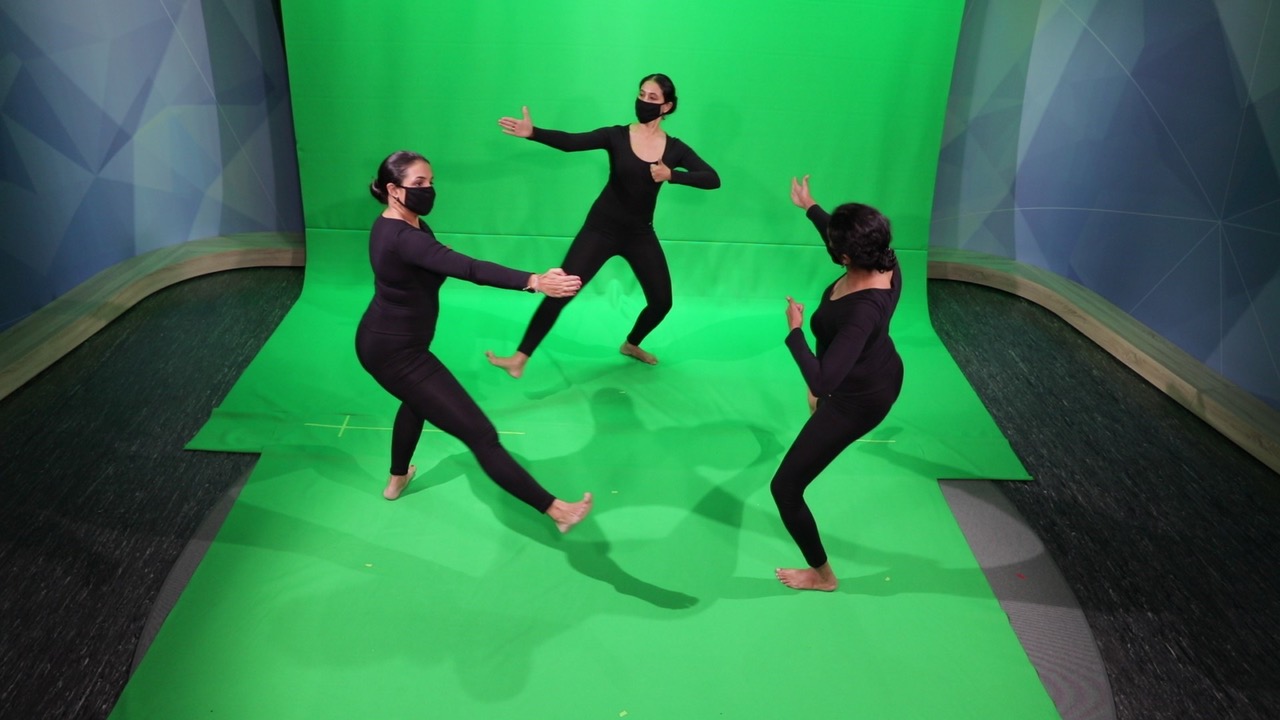By Gayatri Muthukrishnan
At Dance Your Science (DYS), we use movement and dance to communicate science to non-scientific diverse audiences. While exploring the different sciences, we were intrigued by particle physics and the science infrastructure at CERN for two reasons – first and foremost of the scientific concepts and the impressive science architecture of its experiments. Secondly, the philosophical idea of reassessing our place in the universe including the big questions: ‘What are we made of? Where do we come from? Where do we go?’
We are a team of scientists and professional dancers. All three of us perform Bharata Natyam, an Indian classical dance form, that along with intricate movement techniques has a well-defined storytelling vocabulary.

Meeting with scientists at CMS, CERN.
At DYS, we have chosen to tell stories about science. We had the chance to contact Dr. Archana Sharma of CMS who then connected us with Dr. Michael Hoch who is the driving force behind some outreach projects at CMS like art@CMS and ORIGIN. We had discussions with him and his colleagues, he sent us materials and allowed us to participate in a CMS virtual visit, this gave us a better understanding of these fascinating experiments, huge scientific collaborations and how projects are run at CERN. Dr. Michael Hoch and Dr. Tom McCauley also directed us to more valuable content explaining how detectors work, the data is collected, processed, and analysed. By speaking to these two professors we were impressed with not only the grandeur of the experiments, but also the passion with which they spoke about them and how they wanted to spread awareness. They were eager to answer all our questions which allowed us to better understand the finer details of the collisions and detectors in CMS.
Choosing our story for performance
We chose to dive into the details of the accelerators, the collision and detection. We pursued this with our own research by checking videos available freely on the CERN site and at the CMS outreach page. Our research allowed us to plunge straight into the choreography and into testing different ideas and perspectives brought in by each of us. At the same time, we were looking for platforms to present our dialogue. We decided to apply for the 4th Science Filmmaking Marathon run by the Swiss Science Film Academy to be held in October 2020. We jumped at the opportunity to explore our idea further and use this platform to create and perform it. With the time limit given by the Swiss Science Film Academy for this Filmmaking marathon, we chose to focus on the accelerators, starting from the linear accelerator, going all the way to the LHC, and ending with collisions in the CMS detector. We invite you to watch our video, Journey of a Proton, which was presented at the screening of the Swiss Science Film Academy 2020. The journey for us as protons really gave us a whole new perspective of both the science behind particle physics and experiments like CMS that are designed to understand these fundamental aspects of nature.

Future of this collaboration with art@CMS – ORIGIN, Cultural Collisions
With respect to the choreography and performance, we aim to explore more subjects related to CMS and particle physics. E.g. detection of particles in the experiment, the life of subatomic particles, how energy can transform into matter and matter into energy or how the Higgs-Boson was discovered.
Apart from performing and presenting our dialogue on various platforms, we would like to conduct workshops for school students to bring awareness on various topics and inspire them to explore particle physics which is considered very daunting and abstract. We think it is important to engage girls and boys in science. So why not via dance, to visualize and experience with your body, the science behind projects at CERN and CMS.
The views expressed in CMS blogs are personal views of the author and do not necessarily represent official views of the CMS collaboration.
